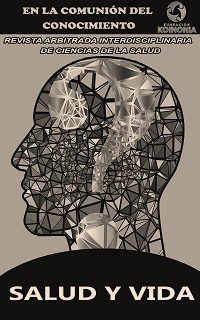Nursing interventions to prevent complications in pronated patients with acute respiratory distress syndrome
DOI:
https://doi.org/10.35381/s.v.v7i1.3569Keywords:
Adult respiratory distress syndrome, respiratory disorders, thoracic diseases, (Source: DeCS)Abstract
Objective: to analyze nursing interventions to prevent complications in prone patients with acute respiratory distress syndrome. Method: Descriptive documentary. Results and Conclusion: The staff should adequately prepare the patient to avoid preventable complications. After pronation, the patient should receive a complete head-to-toe check-up and be monitored. The most serious complications are related to hemodynamic instability, which is caused by severe hypotension, desaturation and bradycardia, linked to fluid movements, and alterations in intrathoracic pressure, all of which should be properly considered and evaluated before performing the maneuver. In addition, it is of utmost importance to prevent the risks of exit of the different devices of the patient, whether hemodynamic, ventilatory support, among others.
Downloads
References
Huppert LA, Matthay MA, Ware LB. Pathogenesis of Acute Respiratory Distress Syndrome. Semin Respir Crit Care Med. 2019;40(1):31-39. https://doi.org/10.1055/s-0039-1683996
Bos LDJ, Ware LB. Acute respiratory distress syndrome: causes, pathophysiology, and phenotypes. Lancet. 2022;400(10358):1145-1156. https://doi.org/10.1016/S0140-6736(22)01485-4
Meyer NJ, Gattinoni L, Calfee CS. Acute respiratory distress syndrome. Lancet. 2021;398(10300):622-637. https://doi.org/10.1016/S0140-6736(21)00439-6
Grupo de Trabajo Mexicano COVID-/COMMEC. Guía COVID-19 para la atención del paciente crítico con infección por SARS-CoV-2 Colegio Mexicano de Medicina Crítica, (segunda parte) [COVID-19 Guidelines for the care of critically ill patients with SARS-CoV-2 infection Mexican College of Critical Care Medicine, (second part)]. Med Crit. 2020;34(2):99-124. https://doi.org/10.35366/93964
González Moreno FJ, Salame Khouri L, Olvera Guzmán CI, Valente Acosta B, Aguirre Sánchez J, Franco Granillo J. Posición prono en pacientes con síndrome de insuficiencia respiratoria progresiva aguda por COVID-19 [Prone position in patients with acute progressive respiratory failure syndrome by COVID-19]. Med. crít. (Col. Mex. Med. Crít.). 2020;34(1):73-77.
Saavedra Trujillo CH. Consenso colombiano de atención, diagnóstico y manejo de la infección por SARS-COV-2/COVID-19 en establecimientos de atención de la salud. Recomendaciones basadas en consenso de expertos e informadas en la evidencia [Colombian consensus on care, diagnosis and management of SARS-COV-2/COVID-19 infection in health care facilities. Recommendations based on expert consensus and informed by evidence]. Infect. 2020;24(3 Suppl 1): 50-60.
Khullar R, Shah S, Singh G, et al. Effects of Prone Ventilation on Oxygenation, Inflammation, and Lung Infiltrates in COVID-19 Related Acute Respiratory Distress Syndrome: A Retrospective Cohort Study. J Clin Med. 2020;9(12):4129. https://doi.org/10.3390/jcm9124129
Vallejo Montaguano JA, Analuisa Jiménez EI, Pachucho Flores AP. Percepción del profesional de enfermería sobre los cuidados aplicados al paciente en posición de decúbito prono asociado al COVID-19 [Nursing professional's perception of the care applied to the patient in prone position associated with COVID-19]. Enferm. investig. 2021;6(2):36-42.
Douglas IS, Rosenthal CA, Swanson DD, et al. Safety and Outcomes of Prolonged Usual Care Prone Position Mechanical Ventilation to Treat Acute Coronavirus Disease 2019 Hypoxemic Respiratory Failure. Crit Care Med. 2021;49(3):490-502. https://doi.org/10.1097/CCM.0000000000004818
Clarke J, Geoghegan P, McEvoy N, et al. Prone positioning improves oxygenation and lung recruitment in patients with SARS-CoV-2 acute respiratory distress syndrome; a single centre cohort study of 20 consecutive patients. BMC Res Notes. 2021;14(1):20. https://doi.org/10.1186/s13104-020-05426-2
Chua EX, Zahir SMISM, Ng KT, et al. Effect of prone versus supine position in COVID-19 patients: A systematic review and meta-analysis. J Clin Anesth. 2021;74:110406. https://doi.org/10.1016/j.jclinane.2021.110406
Araújo MS, Santos MMPD, Silva CJA, Menezes RMP, Feijão AR, Medeiros SM. Prone positioning as an emerging tool in the care provided to patients infected with COVID-19: a scoping review. Rev Lat Am Enfermagem. 2021;29:e3397. https://doi.org/10.1590/1518-8345.4732.3397
Rasheed AM, Amirah MF, Abdallah M, P J P, Issa M, Alharthy A. Ramsay Sedation Scale and Richmond Agitation Sedation Scale: A Cross-sectional Study. Dimens Crit Care Nurs. 2019;38(2):90-95. https://doi.org/10.1097/DCC.0000000000000346
Guérin C, Albert RK, Beitler J, et al. Prone position in ARDS patients: why, when, how and for whom. Intensive Care Med. 2020;46(12):2385-2396. https://doi.org/10.1007/s00134-020-06306-w
Bruni A, Garofalo E, Grande L, et al. Nursing issues in enteral nutrition during prone position in critically ill patients: A systematic review of the literature. Intensive Crit Care Nurs. 2020;60:102899. https://doi.org/10.1016/j.iccn.2020.102899
Published
How to Cite
Issue
Section
License
Copyright (c) 2024 David Gustavo Chacha-Uto, Neris Marina Ortega-Guevara, Elsa Josefina Albornoz-Zamora, Elsy Labrada-Gonzalez

This work is licensed under a Creative Commons Attribution-NonCommercial-ShareAlike 4.0 International License.
CC BY-NC-SA : Esta licencia permite a los reutilizadores distribuir, remezclar, adaptar y construir sobre el material en cualquier medio o formato solo con fines no comerciales, y solo siempre y cuando se dé la atribución al creador. Si remezcla, adapta o construye sobre el material, debe licenciar el material modificado bajo términos idénticos.
OAI-PMH: https://fundacionkoinonia.com.ve/ojs/index.php/saludyvida/oai.









